Packaging Fails And How To Prevent Them. When packaging your freight, there are three common problems that many shippers face; possible damage during transit, your shipment damaging another shipment in transit, or the pickup of your shipment being refused because of poor packaging. Freight packaging isn’t that difficult; you need to learn a little about the basics of freight packaging and apply common sense to avoid packaging failures.
Feel free to laugh as you view these images, but keep in mind that these episodes were not at all humorous to the people involved when they happened; some were quite expensive. As it turns out, packaging freight is not an intuitive skill for some shippers.
1 – We Couldn’t Make This Up
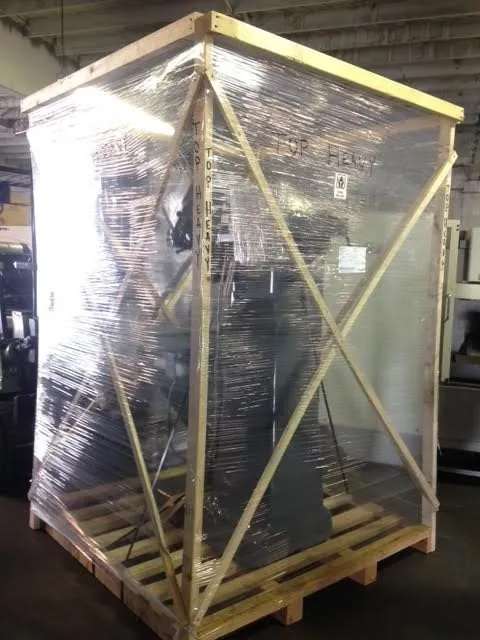
Whoever was responsible for this packaging job must have become a little confused. It looks like they tried to create a hybrid packaging system—part pallet, part crate—by strapping a machine to a pallet and then building a wall of shrink wrap around it. How’d they done?
Close, but not close enough. There is no way those walls could sustain any significant impact should other shipments shift in transit. And shrink wrap was not intended to be used to create protective walls.
Please keep it simple. When you put a piece of machinery on a pallet, strap it to the pallet and wrap the machinery with shrink wrap. If the machinery has some delicate pieces exposed, consider blanket wrapping. Very straightforward.
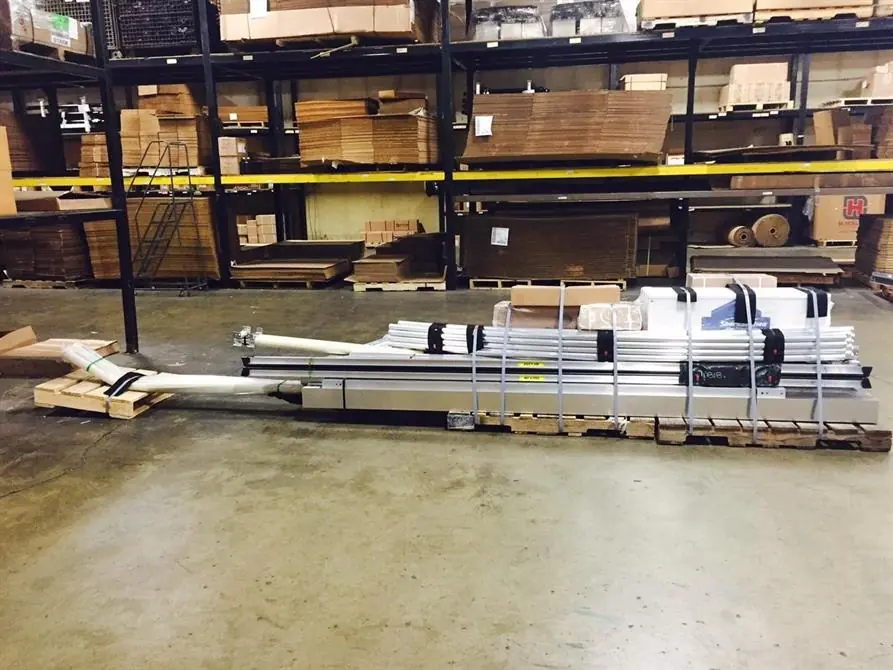
Ask 10 people what they think is the subject of this photo, and you’ll probably get 10 different answers. A 21stcentury bobsled? Art? Fortunately, there are no wrong answers. Also, there are no right answers.
Whoever packaged this had a very real problem. Apparently, they didn’t have a long enough pallet for the shipment. Their solution was to get a second and a third pallet and let the shipment itself hold everything together. What we see here is a case of the pallets being strapped to the goods instead of the other way around. We’ll give them points for originality and the strapping job, but this is no way to package freight. Seriously, how can a driver move this with just a pallet jack? Answer: They can’t.
These goods need to be strapped to one continuous pallet and then shrink-wrapped. Yes, getting an unusually long pallet can be expensive, but having the carrier refuse to ship your package also comes with costs.
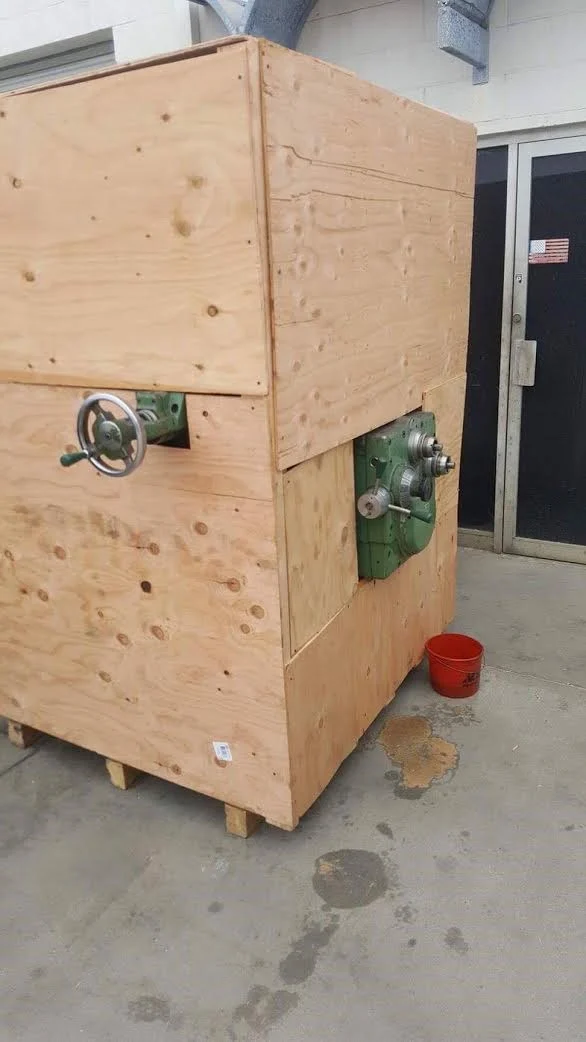
This crate is a little on the rough side, but it probably would be fine if not for one little problem: the entire machine needs to be inside the crate. It looks like our shipper tried to cut corners here by making a crate that’s just a little too small. Oftentimes cutting corners will lead to the biggest packaging fails. The machinery should be held firmly in place within a properly-sized crate, so it doesn’t bang against the crate. Making a crate large enough would also allow for the sides to be continuous pieces of wood rather than the hodgepodge we see here.
Imagine what kind of damage the parts sticking out of the crate could do if the crate came loose. This is just a terrible accident waiting to happen. Also, it’s a shipment the carrier wouldn’t carry.
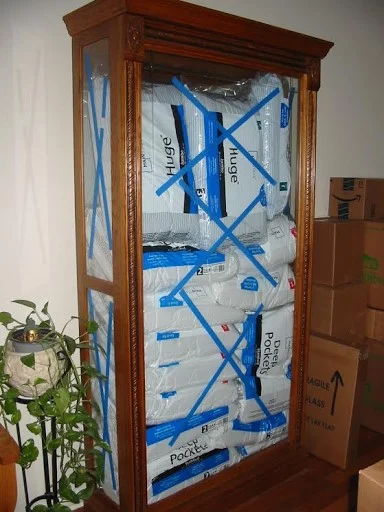
Is this perfect, or what? Here we have a cabinet stuffed with pillows.
Let’s try to follow the shipper’s thinking. The cabinet is like a crate, except that the walls are made of glass instead of wood. So, you stuff the inside with pillows and crisscross blue painter’s tape on the glass, just like they taught you in hurricane preparedness classes, right? Umm, no.
I hope the shipper showed this photo to a shipping expert before having it put on a truck so they could learn the two best ways to package this cabinet. No matter the destination, whether it’s Florida to Georgia or South Carolina to North Carolina, this type of packaging is never going to fly.
Have a proper crate made for the cabinet.
Use White Glove service that will give the cabinet special attention. FreightCenter can arrange White Glove service for you.
Given those two options, the shipper would then be free to choose the answer most appealing (and affordable) to them.
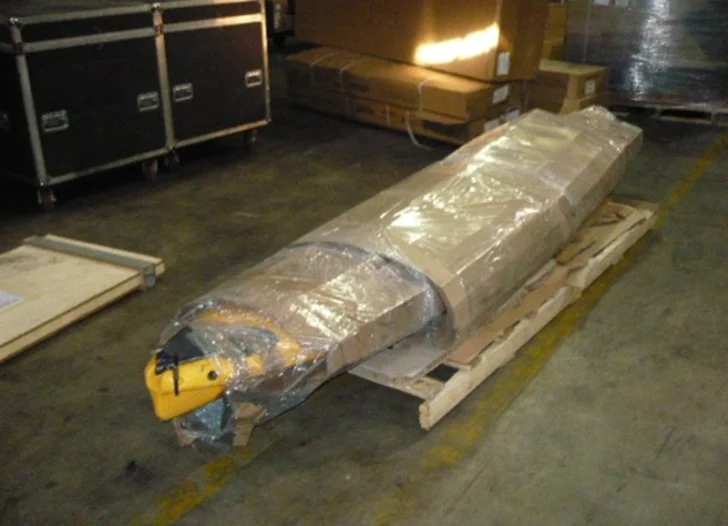
This was a lovely thought, but this shipper was paddling up the wrong … oh, you know.
The first thing we see here is that both ends of the kayak extend beyond the surface area of the pallet. Hard and fast rule: freight must never extend beyond any pallet’s edges. Period. To be clear, it’s like breaking the plane of the end zone with the football: no matter where the football crosses that plane, it’s a touchdown. Freight cannot break the plane of the pallet edges anywhere. There are no extra points.
Kayaks get shipped in boxes, not on pallets. And in this case, the pallet is superfluous. This kayak should have been wrapped in lots of bubble wrap and then boxed for safe shipment. There should have been enough layers of bubble wrap to protect the kayak even if the box was dropped or brushed by another load on the same truck, and no space should have been left between the outside layer of bubble wrap and the container. Using lots of shipping tape on the box is always recommended.
FreightCenter Can Help Prevent Packaging Fails
It is important to know how to send pallets to FBA properly. Following FBA guidelines will help ensure low costs. When you choose to use FBA (Fulfillment by Amazon) services, you are handing over the shipping process to one of Amazon’s 75 fulfillment centers. By using FBA, shippers can relax and have the peace of mind that their product(s) will arrive at their destinations in a safe and cost-effective manner. Providing details of your product will help you determine the right shipping methods. Doing this will allow you to pay the lowest cost according to Amazon’s current pricing structure. Amazon FBA has a very simple pricing structure. You pay $2.49 per unit for Amazon to store your product in their fulfillment centers, and they also handle all of the shipping and customer service for you. There is no monthly or annual fee, so you only pay when you make a sale. Additionally, you will need to make sure that you read all the fine print taking into account any potential additional fees.
Helping customers with proper freight packaging is just one of the ways FreightCenter goes the extra mile for you. If you’re shipping through FreightCenter and aren’t sure if you packaged your item correctly, call your agent and email them a photo of your packaging. They will be happy to tell you, “great job,” or to instruct you on what you need to do differently. And if doing it yourself is just not the right solution for you, FreightCenter will be happy to recommend a third party to package the shipment for you.
Call us at 800.716.7608 or get started with a free online quote.


